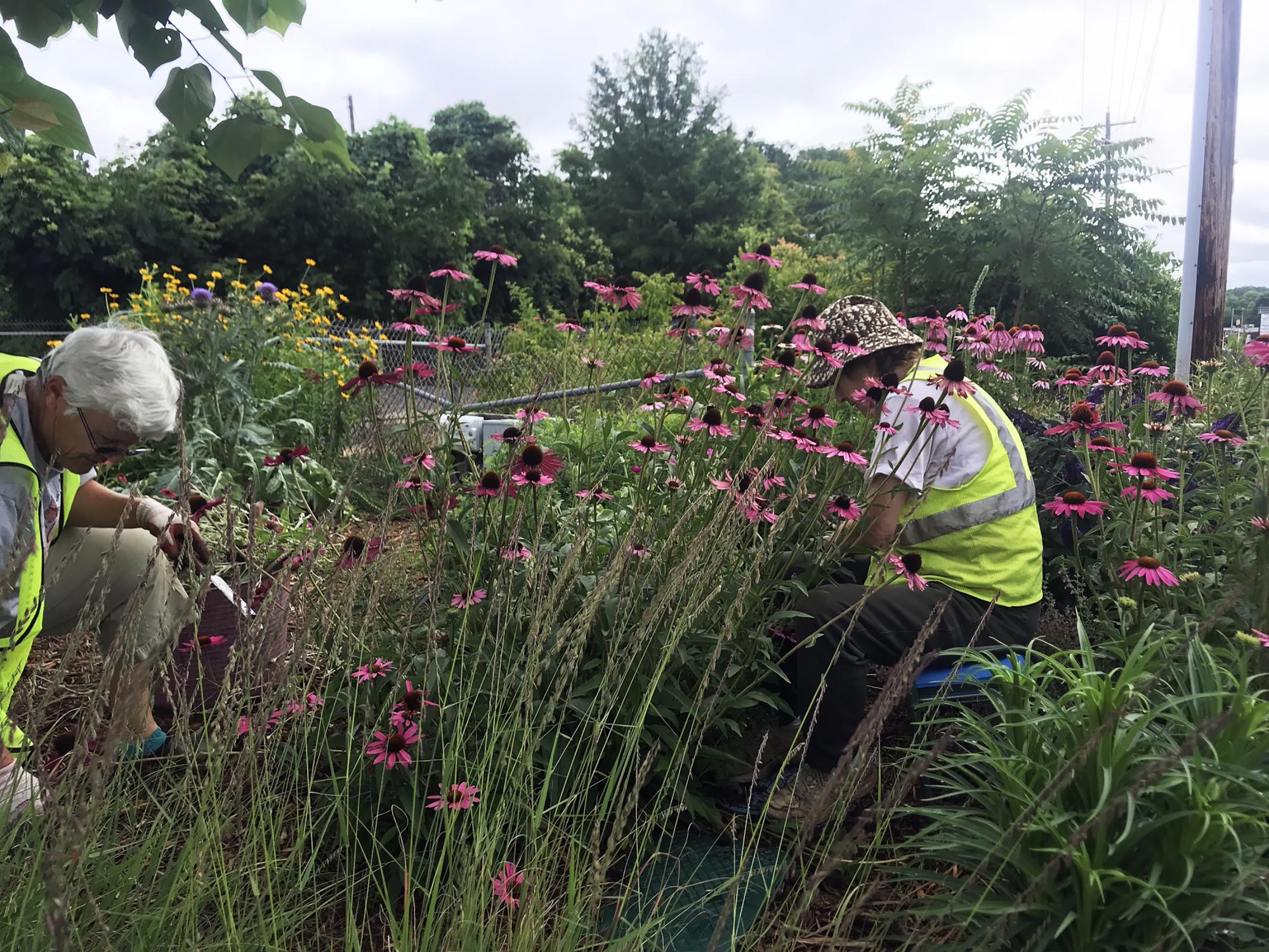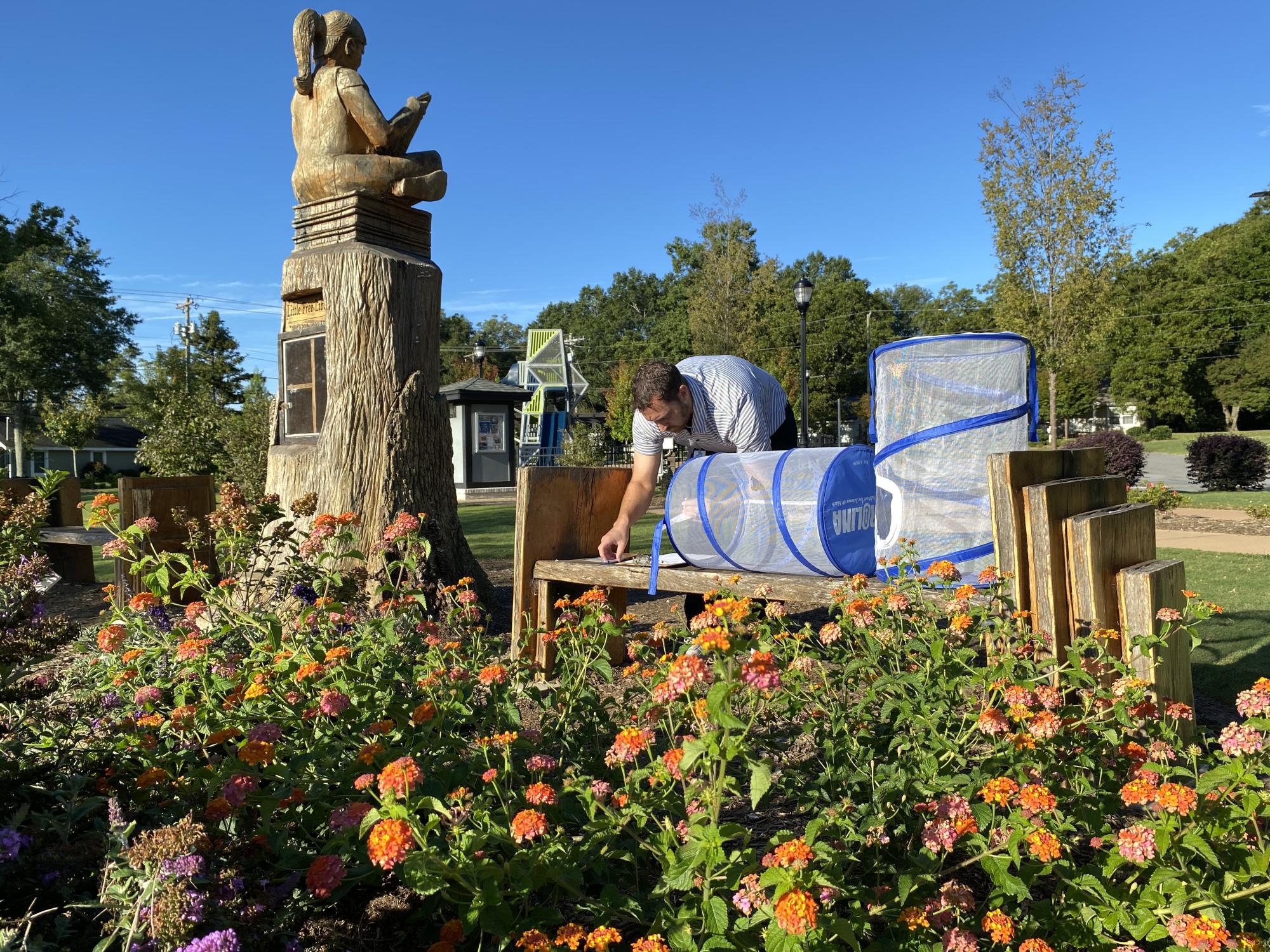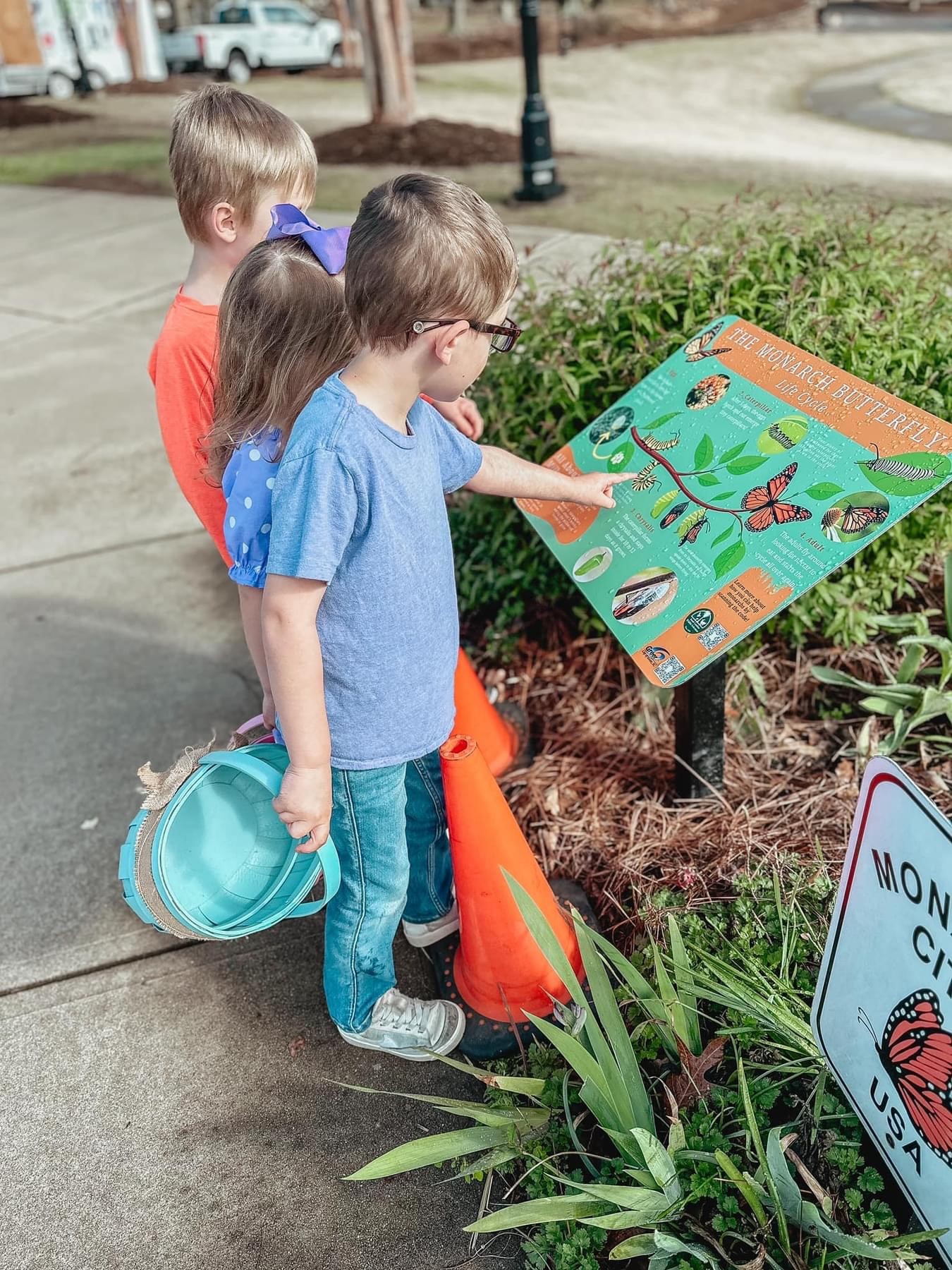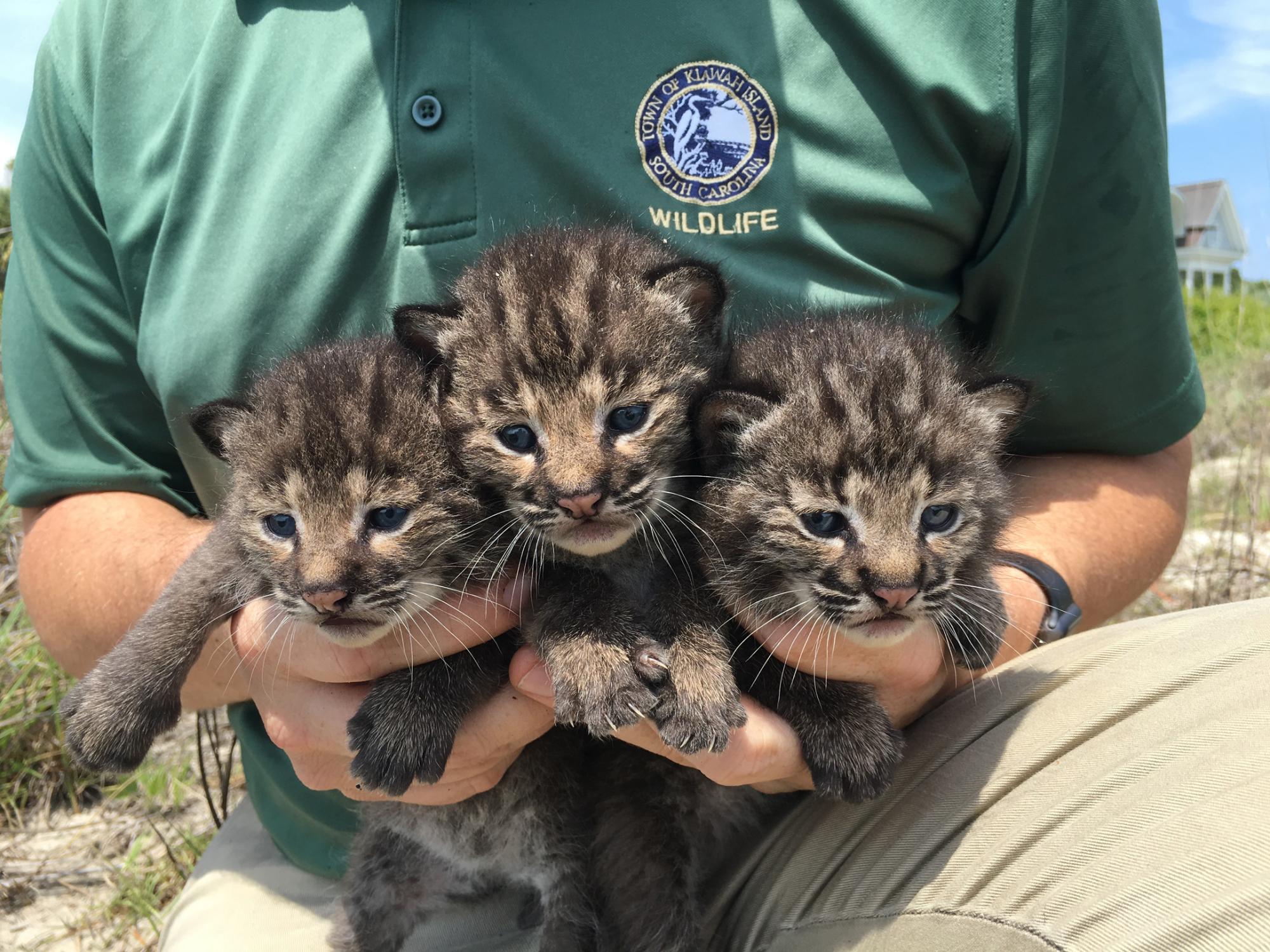From butterflies and bees to bobcats and sea turtles, South Carolina cities and towns are actively working on conserving their local wildlife.
The task requires a lot of education, many volunteers and — in at least one case, several wildlife biologists on staff — to take care of the animals that in turn play a vital role in the delicate ecosystem.
For the City of Greenwood, becoming a Bee City USA partner was a natural opportunity, considering the town’s history as the host of South Carolina Festival of Flowers and the home of the Park Seed Company.

Greenwood's pollinator-friendly gardens are tended by volunteers. Photo: City of Greenwood.
Even though the national program’s logo includes a classic yellow-and-black bumblebee, the conservation efforts are about more than just bees. The city’s efforts look at ways to improve life for all pollinators and creating an environment for their full lifecycles, said Ann Barklow, who retired as the city’s horticulturist and now serves as the Bee City USA liaison and a volunteer coordinator for the city.
The Bee City USA program involves maintaining pollinator-friendly gardens and doing lots of education and outreach to the community.
“If you're a Bee City USA, you learn to be sort of a messy gardener,” Barklow said.
That’s because the yard trash that many people clean out of their yards are just the places that pollinators like to nest. To that end, city crews bring piles of leaves that residents have cleaned up out of their own yards and Barklow and her teams of volunteers help create natural pollinator “hotels.”
“We concentrate on all the lifecycles of insects, not just the nectar and pollen, but we also provide for nesting bees that nest in the ground,” Barklow said. “The leaves provide a habitat for a lot of the insects, including fireflies.”
The city gardens also avoid using any sort of pesticides and cultivate hardier plants that can withstand insects. When perennials are cut back in the gardens, the teams leave a healthy stem where bees and caterpillars like to nest.
“Your Eastern black swallowtail [butterfly] needs fennel and dill and parsley, and so we grow a lot of that,” Barklow said.
Greenwood’s efforts also help other species along the way — including the endangered monarch butterfly. In the City of Greer, monarch butterfly conservation efforts have included planting milkweed — the only plant the monarch caterpillar will munch on — in its gardens, and now has whole swaths of land and gardens dedicated to the butterflies.
Greer Recreation Supervisor Justin Miller, whose job includes managing recreation facilities, occasionally finds himself on “egg patrol” helping protect and hatch monarch butterfly eggs laid on the underside of the milkweed leaves. The harvested eggs are incubated at a city office where people can also learn about the lifecycle of the monarch.
Miller says he is always on the lookout for common houseflies that might also hatch at the same time because they eat the monarch eggs.

Greer's monarch butterfly conservation efforts include butterfly-compatible
gardening as well as cultivating monarch eggs. Photo: City of Greer.
“We started collecting those eggs ourselves and started raising those as a department,” Miller said. “One of every 100 eggs you leave in the wild will make it to the butterfly stage. Everything is out to get that monarch egg and that monarch caterpillar — the common housefly, wasps, bees, spiders, I mean, everything. So, we saw the great need to rear those eggs and bring those in — especially after the Monarch City USA designation we received.”
The city earned that designation in 2022, making it the first city in South Carolina to do so. The City of Clemson and Town of Irmo are Monarch City USA designees as well.

In 2022, Greer received the first Monarch City USA designation in South Carolina.
Photo: City of Greer.
The keys to the Greer program’s success are education and partnering with local garden clubs, Miller said. The local council of garden clubs obtained a grant to help establish the Nancy Welch Memorial Butterfly Garden at Greer City Park. Milkweed and other flora that butterflies are drawn to were planted in the garden, and the city avoids using any pesticides that could be harmful to the monarch during its lifecycle.
From there, the city has added milkweed to other gardens and last year received a grant from the South Carolina Wildlife Federation to plant 100 milkweed plants near the golf course and driving range it has owned since 2020.
“When we raise those caterpillars into butterflies, we release at each garden,” Miller said. “Those butterflies, their offspring, whether it be that third or fourth generation, come back to that garden.”
The Town of Kiawah Island also has programs that help butterflies and endangered shorebirds and bluebirds, but the town’s efforts to protect and conserve its bobcat population has gained importance in recent years as the numbers of those animals has dropped.
Three staff wildlife biologists help manage its Bobcat Guardian program as well as its all-volunteer sea turtle program.
“We do a lot of research projects and management projects with wildlife,” said Wildlife Biologist Jim Jordan, who has been with the town for 25 years.
Since 2007, the town has been tracking its bobcat population, which normally is about 35. Their numbers began to decline in 2017 and got as low as about 10.

The Town of Kiawah Island established a Bobcat Guardian program to protect the important role
that bobcats play in the ecosystem. Photo: Town of Kiawah Island.
“We do this research because we know how important bobcats are to the ecosystem out here,” Jordan said. “We want to make sure they're protected, that they have the habitat they need to survive.”
The thing that was killing the bobcats, which have few natural predators on the island, was anticoagulant rat poison.
“Bobcats sit at the top of the food chain, they're one of the top predators out here,” Jordan said. “Their role in the ecosystem is to control prey species. And with bobcats, that's mainly deer, rats and mice.”
The use of the anticoagulant type of poison does not immediately kill rats and mice, leaving them to be eaten by bobcats, which also become sick and can die when they ingest too much of the poisoned vermin.
Fewer bobcats meant an explosion in the deer population, which nearly doubled in two years, requiring the use of sharpshooters to thin the herd, Jordan said.
“Without bobcats in the ecosystem, prey species increase substantially and lead to other issues,” he said.
To help bring back the bobcats, the town had to work with residents and local pesticide service providers to stop using the specific types of poisons that were affecting the bobcats. The poison is legal to use and the town cannot ban it, because those substances are regulated on a statewide or federal basis.
And, unlike the town’s other protected species — the sea turtle — bobcats are not an endangered species generally and can be found across South Carolina.
Instead, the town’s Bobcat Guardian program enlists residents to pledge not to use four specific types of rodenticides, and to use all pesticides sparingly.
The program encourages the cultivation of native plants to provide better habitat for bobcats.
Kiawah Island’s sea turtle program is similar to most others that operate along the South Carolina coast, with teams of volunteers permitted by the South Carolina Department of Natural Resources to mark and submit detailed inventories on turtle nests.
The town has the largest sea turtle volunteer program in the state, Jordan said, with over 300 participants. The program operates under a permit from the state but is funded and supported by the town.
The nesting crews work from the beginning of May through early August looking for nests and recording information on them. Once those nests are identified, other volunteers will watch them for hatching and submit county numbers.
The town also has a Shorebird Stewardship program, helping keep track of the birds that nest on the island, as well as bluebird nesting boxes that volunteers check weekly for a count of them.
In all, the town spends about $500,000 a year on its conservation efforts.
“Kiawah’s commitment to the environment and protecting wildlife goes all the way back to when development of the island was first being considered in the mid-70s,” Jordan said. “The developers at the time did an incredibly detailed environmental assessment — mammals and reptiles and birds and archaeology and all of these things … That was kind of the principles on which Kiawah was founded.”
